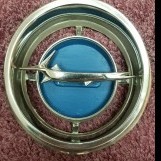Anyone Have Any Experience With The Quicksand Concentrator?
-
Similar Content
-
- 1 reply
- 442 views
-
- 9 replies
- 846 views
-
- 1 reply
- 919 views
-
- 0 replies
- 766 views
-
- 6 replies
- 1,078 views
-
- 1 reply
- 1,242 views
-
-



.thumb.jpg.95344db3aeef0a4c6c73420daa366191.jpg)






Recommended Posts
Create an account or sign in to comment
You need to be a member in order to leave a comment
Create an account
Sign up for a new account in our community. It's easy!
Register a new accountSign in
Already have an account? Sign in here.
Sign In Now